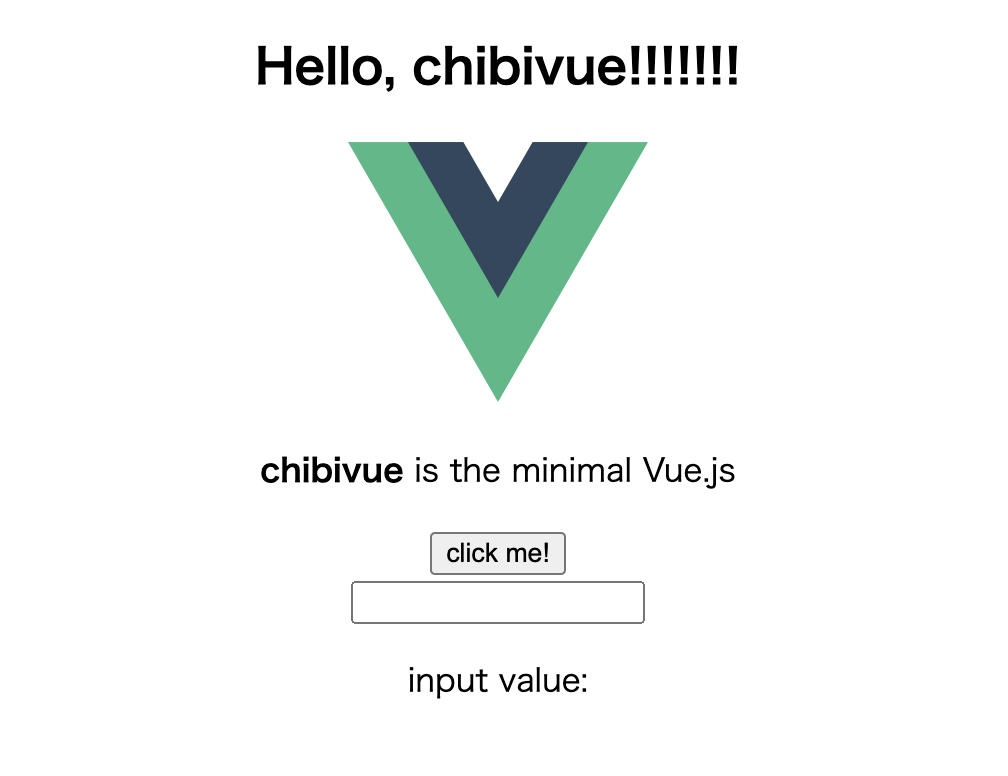SFC的script块编译
我们要做什么
首先,SFC中的script部分原本是这样的:
export default {
setup() {},
}我们希望将这部分与之前生成的render函数很好地混合并导出,但是能否只提取出:
{
setup() {},
}这部分呢?
如果我们能提取出这部分,那么就可以这样处理:
const _sfc_main = {
setup() {},
}
export default { ..._sfc_main, render }使用外部库
要实现上述目标,我们将使用以下两个库来简化实现:
- @babel/parser
- magic-string
Babel
经常使用JavaScript的人可能对它很熟悉。
Babel是一个用于将JavaScript转换为向后兼容版本的工具链。
简单来说,它是一个JS到JS的编译器(转译器)。
这次我们不仅将Babel作为编译器使用,还将其作为解析器使用。
Babel作为编译器,其内部当然实现了将代码转换为AST的解析器。
我们将使用这个解析器库。
刚才提到了AST这个术语,JavaScript当然也有AST表示。
这里有AST的规范:(https://github.com/estree/estree)
您可以查看上述GitHub中的md文件,但让我简单解释一下JavaScript的AST:
首先,整个程序由一个名为Program的AST节点表示,它包含一个Statement数组。(为了方便理解,我用TS的interface表示)
interface Program {
body: Statement[]
}Statement在中文中是"语句"。JavaScript是语句的集合。
具体来说,有"变量声明语句"、"if语句"、"for语句"、"块语句"等。
interface Statement {}
interface VariableDeclaration extends Statement {
/* 省略 */
}
interface IfStatement extends Statement {
/* 省略 */
}
interface ForStatement extends Statement {
/* 省略 */
}
interface BlockStatement extends Statement {
body: Statement[]
}
// 还有很多其他类型而语句在大多数情况下包含"Expression(表达式)"。
表达式可以理解为可以赋值给变量的东西。
具体例子包括"对象"、"二元运算"、"函数调用"等。
interface Expression {}
interface BinaryExpression extends Expression {
operator: '+' | '-' | '*' | '/' // 还有很多,但这里省略
left: Expression
right: Expression
}
interface ObjectExpression extends Expression {
properties: Property[] // 省略
}
interface CallExpression extends Expression {
callee: Expression
arguments: Expression[]
}
// 还有很多其他类型考虑if语句,它具有以下结构:
interface IfStatement extends Statement {
test: Expression // 条件值
consequent: Statement // 条件为true时执行的语句
alternate: Statement | null // 条件为false时执行的语句
}这样,JavaScript的语法会被解析为上述的AST。
对于已经实现过chibivue模板编译器的各位来说,这应该很容易理解。(是同一个概念)
为什么要使用Babel?有两个原因:一是单纯因为自己实现太麻烦。
虽然熟悉解析器实现的各位技术上可以参考estree自己实现JS解析器,
但这会非常麻烦,而且对于我们的目标"深入理解Vue"来说不是特别重要。
另一个原因是Vue官方在这部分也使用了Babel。
magic-string
https://github.com/rich-harris/magic-string
还有一个我们想使用的库,这也是Vue官方使用的。
这是一个让字符串操作更便捷的库。
const input = 'Hello'
const s = new MagicString(input)像这样创建一个实例,然后使用实例上的便捷方法进行字符串操作。
下面是一些例子:
s.append('!!!') // 在末尾添加
s.prepend('message: ') // 在开头添加
s.overwrite(9, 13, '你好') // 指定范围覆盖虽然不是必须使用这个库,但为了与Vue官方保持一致,我们决定使用它。
无论是Babel还是magic-string,具体用法会在实现过程中一并解释,所以只需要有一个大致的了解即可。
重写script的default export
再次确认我们的目标:我们想将
export default {
setup() {},
// 其他选项
}重写为
const _sfc_main = {
setup() {},
// 其他选项
}
export default { ..._sfc_main, render }换句话说,我们需要从原始代码的export语句中提取出export对象,并将其赋值给一个名为_sfc_main的变量。
首先安装所需库:
pwd # ~
ni @babel/parser magic-string创建一个rewriteDefault.ts文件:
pwd # ~
touch packages/compiler-sfc/rewriteDefault.ts这个函数接收input(源代码)和as(最终要绑定的变量名)作为参数,并返回转换后的源代码。
~/packages/compiler-sfc/rewriteDefault.ts
export function rewriteDefault(input: string, as: string): string {
// TODO:
return ''
}首先,我们处理不存在export声明的情况。 如果没有export,就绑定一个空对象并返回。
const defaultExportRE = /((?:^|\n|;)\s*)export(\s*)default/
const namedDefaultExportRE = /((?:^|\n|;)\s*)export(.+)(?:as)?(\s*)default/s
export function rewriteDefault(input: string, as: string): string {
if (!hasDefaultExport(input)) {
return input + `\nconst ${as} = {}`
}
// TODO:
return ''
}
export function hasDefaultExport(input: string): boolean {
return defaultExportRE.test(input) || namedDefaultExportRE.test(input)
}现在是Babel解析器和magic-string登场的时候了。
import { parse } from '@babel/parser'
import MagicString from 'magic-string'
// .
// .
export function rewriteDefault(input: string, as: string): string {
// .
// .
const s = new MagicString(input)
const ast = parse(input, {
sourceType: 'module',
}).program.body
// .
// .
}接下来,我们将基于Babel解析器生成的JavaScript AST(ast)对s进行字符串操作。
虽然代码有些长,但我会在源代码注释中添加补充说明。
基本上就是遍历AST,根据节点类型进行分支处理,然后使用magic-string的方法操作s。
export function rewriteDefault(input: string, as: string): string {
// .
// .
ast.forEach(node => {
// 处理default export的情况
if (node.type === 'ExportDefaultDeclaration') {
if (node.declaration.type === 'ClassDeclaration') {
// 如果是`export default class Hoge {}`,则替换为`class Hoge {}`
s.overwrite(node.start!, node.declaration.id.start!, `class `)
// 然后在末尾添加`const ${as} = Hoge;`这样的代码
s.append(`\nconst ${as} = ${node.declaration.id.name}`)
} else {
// 其他default export情况,将声明部分替换为变量声明
// 例1) `export default { setup() {}, }` -> `const ${as} = { setup() {}, }`
// 例2) `export default Hoge` -> `const ${as} = Hoge`
s.overwrite(node.start!, node.declaration.start!, `const ${as} = `)
}
}
// 在named export的情况下,也可能在声明中出现default export
// 主要有3种模式:
// 1. `export { default } from "source";`这样的声明
// 2. `export { hoge as default }` from 'source'这样的声明
// 3. `export { hoge as default }`这样的声明
if (node.type === 'ExportNamedDeclaration') {
for (const specifier of node.specifiers) {
if (
specifier.type === 'ExportSpecifier' &&
specifier.exported.type === 'Identifier' &&
specifier.exported.name === 'default'
) {
// 如果有`from`关键字
if (node.source) {
if (specifier.local.name === 'default') {
// 1. 对于`export { default } from "source";`这样的声明
// 将其提取为import语句并命名,然后绑定到最终变量
// 例) `export { default } from "source";` -> `import { default as __VUE_DEFAULT__ } from 'source'; const ${as} = __VUE_DEFAULT__`
const end = specifierEnd(input, specifier.local.end!, node.end!)
s.prepend(
`import { default as __VUE_DEFAULT__ } from '${node.source.value}'\n`,
)
s.overwrite(specifier.start!, end, ``)
s.append(`\nconst ${as} = __VUE_DEFAULT__`)
continue
} else {
// 2. 对于`export { hoge as default }` from 'source'这样的声明
// 先将所有specifier转换为import语句,然后将as default的变量绑定到最终变量
// 例) `export { hoge as default } from "source";` -> `import { hoge } from 'source'; const ${as} = hoge
const end = specifierEnd(
input,
specifier.exported.end!,
node.end!,
)
s.prepend(
`import { ${input.slice(
specifier.local.start!,
specifier.local.end!,
)} } from '${node.source.value}'\n`,
)
// 3. 对于`export { hoge as default }`这样的声明
// 简单地绑定到最终变量
s.overwrite(specifier.start!, end, ``)
s.append(`\nconst ${as} = ${specifier.local.name}`)
continue
}
}
const end = specifierEnd(input, specifier.end!, node.end!)
s.overwrite(specifier.start!, end, ``)
s.append(`\nconst ${as} = ${specifier.local.name}`)
}
}
}
})
return s.toString()
}
// 计算声明语句的结束位置
function specifierEnd(input: string, end: number, nodeEnd: number | null) {
// export { default , foo } ...
let hasCommas = false
let oldEnd = end
while (end < nodeEnd!) {
if (/\s/.test(input.charAt(end))) {
end++
} else if (input.charAt(end) === ',') {
end++
hasCommas = true
break
} else if (input.charAt(end) === '}') {
break
}
}
return hasCommas ? end : oldEnd
}现在我们可以重写default export了。
让我们在插件中实际使用它:
import type { Plugin } from 'vite'
import { createFilter } from 'vite'
import { parse, rewriteDefault } from '../../compiler-sfc'
import { compile } from '../../compiler-dom'
export default function vitePluginChibivue(): Plugin {
const filter = createFilter(/\.vue$/)
return {
name: 'vite:chibivue',
transform(code, id) {
if (!filter(id)) return
const outputs = []
outputs.push("import * as ChibiVue from 'chibivue'")
const { descriptor } = parse(code, { filename: id })
// --------------------------- 从这里开始
const SFC_MAIN = '_sfc_main'
const scriptCode = rewriteDefault(
descriptor.script?.content ?? '',
SFC_MAIN,
)
outputs.push(scriptCode)
// --------------------------- 到这里结束
const templateCode = compile(descriptor.template?.content ?? '', {
isBrowser: false,
})
outputs.push(templateCode)
outputs.push('\n')
outputs.push(`export default { ...${SFC_MAIN}, render }`) // 这里
return { code: outputs.join('\n') }
},
}
}在此之前需要做一点修改:
~/packages/runtime-core/component.ts
export const setupComponent = (instance: ComponentInternalInstance) => {
// .
// .
// .
// 将component的render选项添加到实例中
const { render } = component
if (render) {
instance.render = render as InternalRenderFunction
}
}现在应该可以渲染出来了!!!

由于我们还没有处理样式,所以样式没有应用,但渲染功能已经实现了。
 The chibivue Book
The chibivue Book